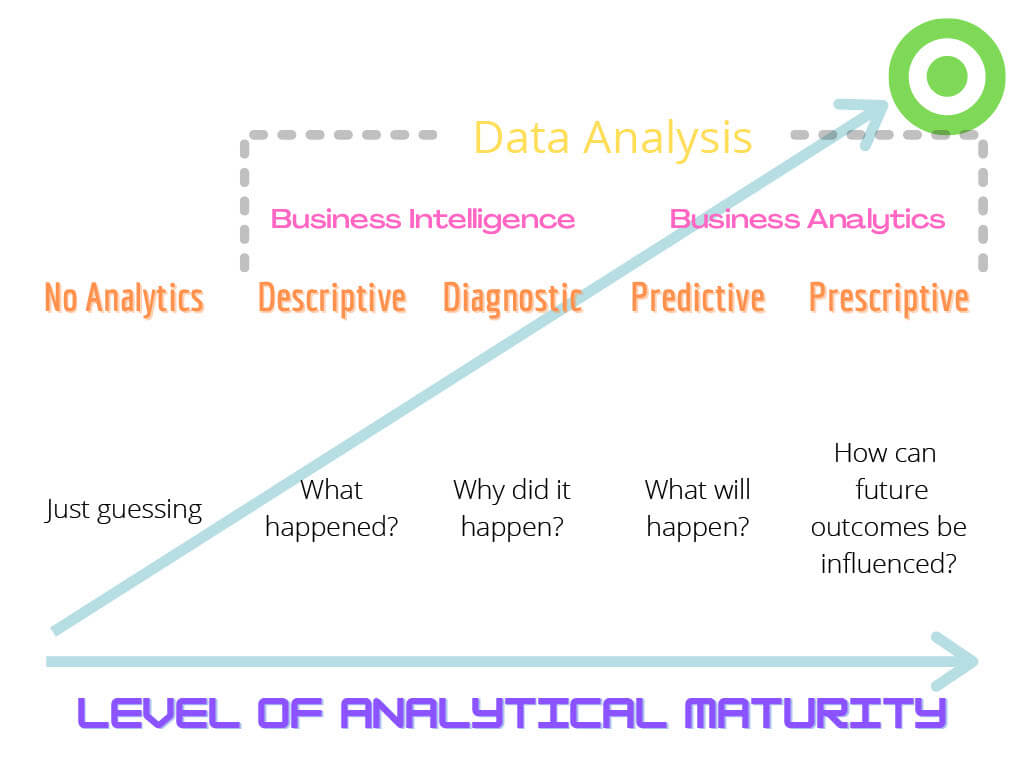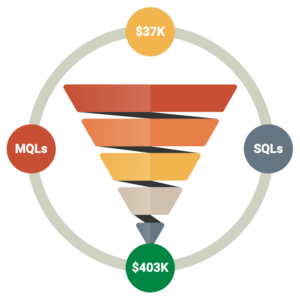My opinion on the differences and why you should care.

Business intelligence and business analytics may seem like a couple of buzzwords to some of us (myself included, originally), but they are both actually extremely useful concepts for any organization, if not necessary practices for all organizations (or at least successful ones!).
What Exactly is Business Intelligence?

Business intelligence, or BI, is a little bit of an umbrella term that pertains to the tools, processes, and methodologies organizations implement when examining past and present data in order to make informed business decisions.

And What About Business Analytics?
Business analytics (BA) is also somewhat of a blanket term that often refers to the tools, processes, and methodologies organizations implement when examining past and present data in order to make informed business decisions.
You’re probably doing a bit of a double take right now, and rightfully so! Because those seem like the same definitions. Pretty confusing huh? I certainly think so!
BI and BA are complementary and are very similar in that they both:
- Fall under the broad scope of data analysis
- Rely heavily on quality and quantity of data
- Involve transforming, integrating, and enhancing operational data
- Provide stakeholders with reliable information that guides business decisions
- Work together to form a holistic view of the business

But what’s the difference?
Don’t worry, I’ll share what’s helped me clear up some of the confusion after listening in on several of our conversations with customers!
While the two terms are sometimes used synonymously (which seems to be pretty often, to be honest), they are not quite the same. Although BI is concerned with the here and now and is strategic in nature, deriving from descriptive and diagnostic analyses, conversely, BA is future-focused and is more tactical in nature, involving predictive and prescriptive analyses. BI answers the whos, whats, whens, wheres, whys, and hows (W5Hs) of past and present data and BA answers the W5Hs of future data. Essentially, organizations utilize BI to take immediate action by making decisions regarding current operations and BA to make decisions that aim to understand and improve their operations to come. So, to summarize, BI is more surface level for reporting purposes (KPIs and metrics) and BA digs a little deeper to facilitate planning ahead (forecasting and optimization), allowing you to tell stories with your data, by uncovering business opportunities through statistical and quantitative analyses.
I’ve even created this awesome graphic (with guidance from some great resources) hoping to shed some light on the subject, so please feel free to borrow it for educational purposes:

As you can see, descriptive analytics explain what happened, diagnostic analytics reveal why things happened, predictive analytics aim to (you guessed it…) predict what will happen, and prescriptive analytics both determine outcomes and advise future dealings. In a nutshell, the super awesome graphic above indicates that organizations not taking advantage of descriptive, diagnostic, predictive, or prescriptive analytics are basically just guessing, which pretty much makes them clueless! Analytical maturity requires employing both BI and BA to make the best possible decisions for your business.
Now we’ve reached the ‘why you should care’ point of this blog post, where I will attempt to persuade you to get with the times and harness the power of your data with BI and BA. Let’s just consider some of the many benefits offered by each of them:
Benefits of Business Intelligence
- Provide fast answers to business questions
- Visualize past & present performance
- Increase awareness of data
- Gain new perspectives on existing data
- Identify trends and patterns in organizational procedures
- Easily create reports to summarize the data
- Uncover useful insights
Benefits of Business Analytics
- Improve performance & efficiency
- Increase accuracy in decision making
- Minimize risks
- Inspire change & innovation
- Plan for the unexpected
- Test new marketing campaigns
- Understand the effectiveness of marketing activities
- Gain a competitive advantage
- Enhance comprehension of consumers
- Drive long-term growth
- Discover hidden trends
I know, there are a ton of perks associated with BI and BA!

And just to further indulge your cognizance, check out how some companies in a variety of industries are currently using BI and BA to successfully guide them in the real-business-world examples I’ve provided below:
Current Successes From BI & BA
Transportation – finding gaps in performance to reduce budgets and maximize profits
Service – optimizing routes for fast and efficient service
Retail – creating personalized marketing messages with purchase suggestions for loyalty customers, based on their past purchases, as well as keeping up with production and distribution needs, based on demand
Hospital – optimizing the flow of patients, scheduling surgeries, and associating symptoms and diagnoses for faster care
Banking – learning which customers are most likely to apply and qualify for specific services, based on a variety of complex factors and appropriately individually targeting them with marketing messages based on their qualifications and needs
Public Sector – making infrastructure improvements where they’re needed most, first
So, now you might be pondering how to get your organization up to speed with BI and BA. That’s where we come in!

Enter DataLakeHouse
DataLakeHouse is an end-to-end self-service business analytics platform with ELT and advanced machine learning capabilities. Although most platforms that offer business analytics capabilities also serve as business intelligence tools, it usually doesn’t work the other way around. To clarify, not all BI platforms include business analytics tools. Lucky for you, DataLakeHouse acts as an all-in-one solution that will bring any organization to the highest level of analytical maturity. To learn more about how DataLakeHouse can inform your business decisions and in turn improve your organization’s efficiency and drive long-term growth, click the button below 👇!


